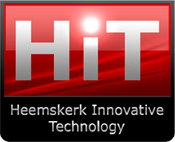Analysis of ITER Upper Port Plug Maintenance Scenarios
Abstract:
The ITER tokamak has a modular design, with port plugs, blanket modules and divertor cassettes. This set-up allows for maintenance of diagnostics, heating systems and first wall elements. The maintenance can be done in situ, or in the Hot Cell. Safe and effective remote handling (RH) will be ensured by the RH requirements and standards. Compliance is verified through remote handling compatibility assessments at the ITER Design Review milestones.
The Remote Handling Study Centre at FOM Institute DIFFER is created to study ITER RH maintenance processes at different levels of complexity, from relatively simple situational awareness checks using snap-shots in the CAD system, time studies using virtual reality (VR) animations, to extensive operational sequence validation with multiple operators in real-time.
The multi-operator facility mimics an RH work-cell as presently foreseen in the ITER RH control room. Novel VR technology is used to create a realistic setting in which a team of RH operators can interact with virtual ITER environments. A physics engine is used to emulate real-time contact interaction as to provide realistic haptic feed-back. Complex interactions between the RH operators and the control room system software are tested. RH task performance is quantified and operational resource usage estimated.
The article provides a description and lessons learned from a recent study on replacement of the Steering Mirror Assembly on the ECRH (Electron Cyclotron Resonance Heating) Upper Launcher port plug.
